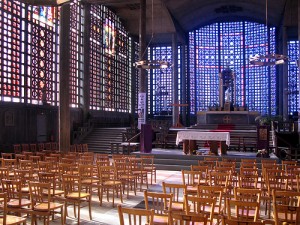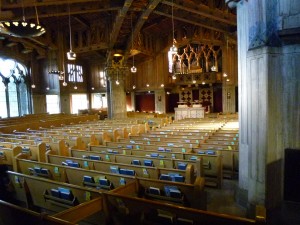
In an article in the current issue of Design Intelligence, the architect and Notre Dame professor, Duncan G. Stroik writes that the design of contemporary megachurches, which he characterizes as “non-architecture,” leaves much to be desired. It’s hard to argue with that (see my Slate slide show on megachurches here). But then Stroik goes on to equate megachurches with modernism, whence he elides into the classicist’s standard litany of the failings of modernist architecture. “Gone was the need for human scale and proportions, natural materials, historical elements, and the classical understanding of civic order,” he writes. I am not sure what he means by “natural materials,” but presumably concrete does not qualify, yet Auguste Perret’s all-concrete Notre-Dame du Raincy, an early classic, is a modern reinterpretation of the Gothic. I don’t know that Gaudi had a classical understanding of civic order, but Sagrada Familia shines with his deep religiosity. So does Fay Jones’s Thorncrown Chapel, which incorporates natural materials and human scale.

Stroik similarly exaggerates when he writes that Wright, Le Corbusier, Aalto and Mies “did very few churches.” It is true that Mies designed only the rather forlorn chapel at IIT, but Le Corbusier built three churches, and Wright built no less than six places of worship: Unity Temple, Unitarian Meeting House, a Greek Orthodox church, Congregation Church, Beth Sholom Synagogue, and a chapel at Florida Southern University. As for Aalto, he designed six churches as well as two funerary chapels (one unbuilt). I have not seen his transcendent church at Imatra, but I have seen Wright’s Beth Sholom, and it is a numinous space. So is the dark cave of Ronchamp. I recently re-visited Bernard Maybeck’s First Church of Christ Scientist in Berkeley. While this exceptional design is hardly a paragon of modernism, neither is it bound by tradition. But it is a moving and much loved place of worship.
